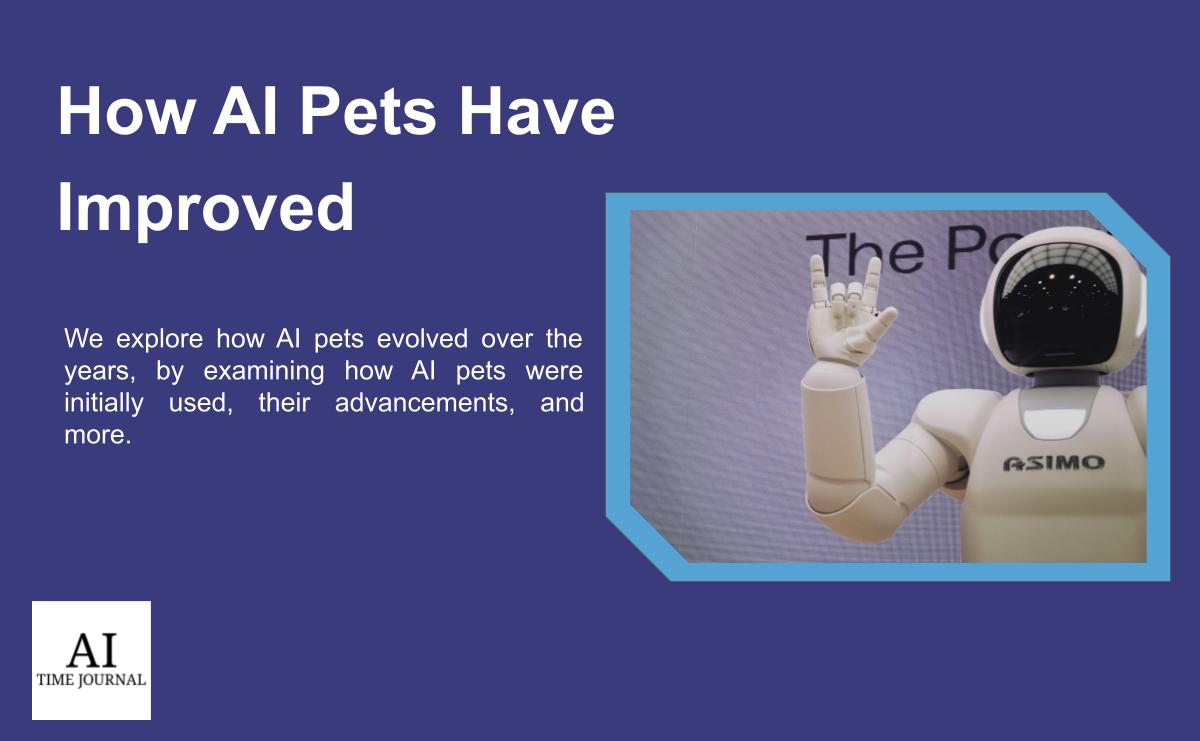
It’s no surprise that people love connecting with and being in the presence of their animal companions. According to the CDC, studies have shown that owning a pet can provide many health benefits, from decreased blood pressure to better cognitive function in adults.
Although, for those who cannot be around real animals, artificial intelligence has provided a solution.
Artificially intelligent pets resemble any ordinary domesticated cat or dog, except for their robotic-like structure and the fact that they are the products of technological innovation rather than nature. These mechanical animals provide all the benefits of owning a pet while eliminating potential drawbacks.
Today, the personalities of these pets have improved exponentially with the help of AI, to the point of developing realistic and emotional capabilities that emulate real animals.
Even though AI pets are an exciting development in the constant improvement of technology, the idea dates back to the late 1990s.
How the First AI Pets Operated
In 1996, the Tamagotchi was regarded as the first AI pet introduced to the consumer market, instantly becoming a wild success with the younger audience.
- The ability to show emotions based on the users nurturing or disciplined response.
- Growing up and evolving from young to old in different ways depending on if the user neglects them.
- The ability to eat and develop hunger.
- A life and death cycle
These abilities of the Tamagotchi resembled software automation, as the user would input actions into it and the Tamagotchi would react automatically depending on the different inputs.
The Tamagotchi was unique for its time. However, AI pets would soon evolve, implementing more complex features as AI technology advanced.
The Improvement of AI Pets
In 1998, Sony’s AIBO was introduced to the world. From behind a small pixelated screen to a physical moving entity, AIBO is a robotic dog that interacts with humans using Machine Learning technology.
By identifying various patterns and data, AIBO detects a positive or negative experience from the user and uploads it to the digital cloud, processing this as the robot goes through its “sleep cycle.”
The AIBO will also react to the users’ physical touch using touch sensors on the robot’s body to emulate the act of petting an animal.
ML technology is often seen in AI pets that follow. Newer products like Tombot and Leonardo use more advanced machine learning and sensors to give the pet-owning experience to the user. These products’ furry exteriors also resemble that of a real animal.
How AI Pets Function Today
The most recent AI pet comes in the form of Moflin. First introduced in 2019 by Vanguard Industries, the Moflin’s goal is to act no different than any real domesticated creature.
When compared to the Tamagotchi, the Moflin possesses an array of complex features inside of its “cute and furry” exterior:
- An advanced emotional spectrum including stress, calmness, and anxiety.
- An internal microphone is used for vocal human interaction.
- The “warming up” to a human (being startled at first when picked up to calming down)
- Making subtle noises while it “sleeps” like a real animal.
The Moflin interacts with the human user and adapts over time depending on its environment with the help of ML. This is just the latest example of AI capabilities in robot pets and will seemingly not be the last innovation of its kind.
What to Expect in the Future
Implementing AI animals into society presents a unique concept in the world of technology. From the first Tamagotchi as a mere entertainment product, AI pets’ goal has shifted slightly to provide emotional and social support to those who need it, such as elderly residents in nursing homes who experience loneliness.
Would these AI pets eventually replace our real animals? Even though unlikely, the answer remains unclear at this point. However, what is clear is that AI and machine learning will advance in the coming years, and most likely, these products will too.
Although some may view AI pets as a cold and dystopian concept, these pets could provide valuable benefits as real animals do.
